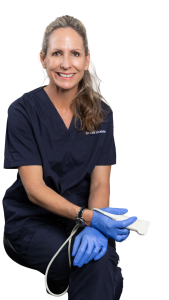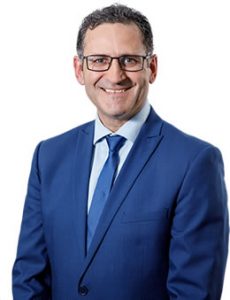Spider veins are invariably treated with Sclerotherapy whereby a small amount of solution (the sclerosant) is injected into the abnormal veins to close them off. The body then dissolves these treated veins. Laser treatment of spider veins has produced inferior results to Sclerotherapy. As with all medical treatments the skill of the treating doctor is a critical component to achieving a successful result. The Australasian College of Phlebology has a register of doctors credentialed to perform certain procedures. Varicose veins are increasingly being treated less with surgery (“vein stripping”) and more with the “non-surgical” procedures of Ultrasound Guided Sclerotherapy (UGS) and Endovenous Laser Ablation (ELA). Some Phlebologists still perform adjunctive surgery (ambulatory phlebectomies) in association with one of the non-surgical techniques. Whether UGS or ELA is used depends on many factors with the most important being the size of the vein being treated. The larger the veins are more likely to be treated with ELA.
COMPRESSION STOCKINGS
These come in a variety of compression strengths ranging from support pantyhose to Class 3 medical compression stockings. In between are the compression stockings that are useful in the prevention of DVT’s when flying and the anti-embolism stockings that are often work in hospital. After Sclerotherapy it is usual for a Class 2 stocking to be worn from 3 days to 2 weeks depending on which vein was treated. As an adjunct to wearing stockings it is important to do as much walking as is possible.
ENDOVENOUS TECHNIQUES (RADIOFREQUENCY AND LASER)
In many countries Endovenous Laser Ablation (ELA) is replacing, or has replaced, the traditional surgical “stripping” of veins. The reasons for this are that ELA can be done as an office procedure (walk-in, walk-out) and has less risk than surgery. It also does not have the recovery time associated with surgery. The long term results of ELA are excellent. Importantly the recurrence rate of new varicose veins after surgery, which is often very concerning for patients, is avoided by performing ELA. The technique of ELA consists of placing a small laser fibre up the middle of the vein. This fibre is then very slowly withdrawn from and the laser energy from the tip of the fibre then heat seals as it is withdrawn. The laser is introduced via a 3-4 mm cut (done under local anaesthetic) and the procedure itself is also done under local anaesthetic. Normal walking is possible straight away as the local anaesthetic is not into the muscles but only placed around the vein being treated. The actual laser treatment is painless although some patients report a buzzing sensation.








Really good info on here. Just a further question about compression stockings – does it have to be a medical stocking? Are garmets like SKINS and other compression sportswear any good for leg compression?